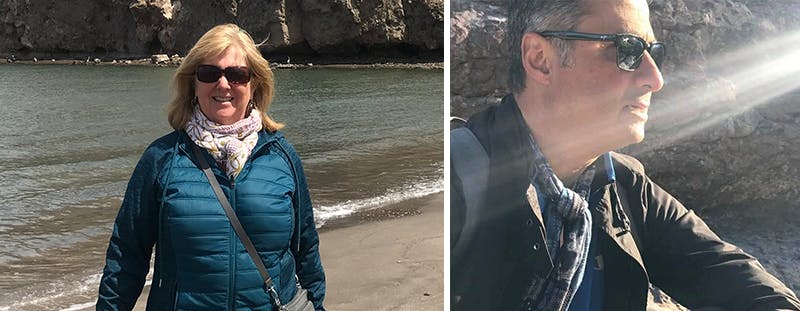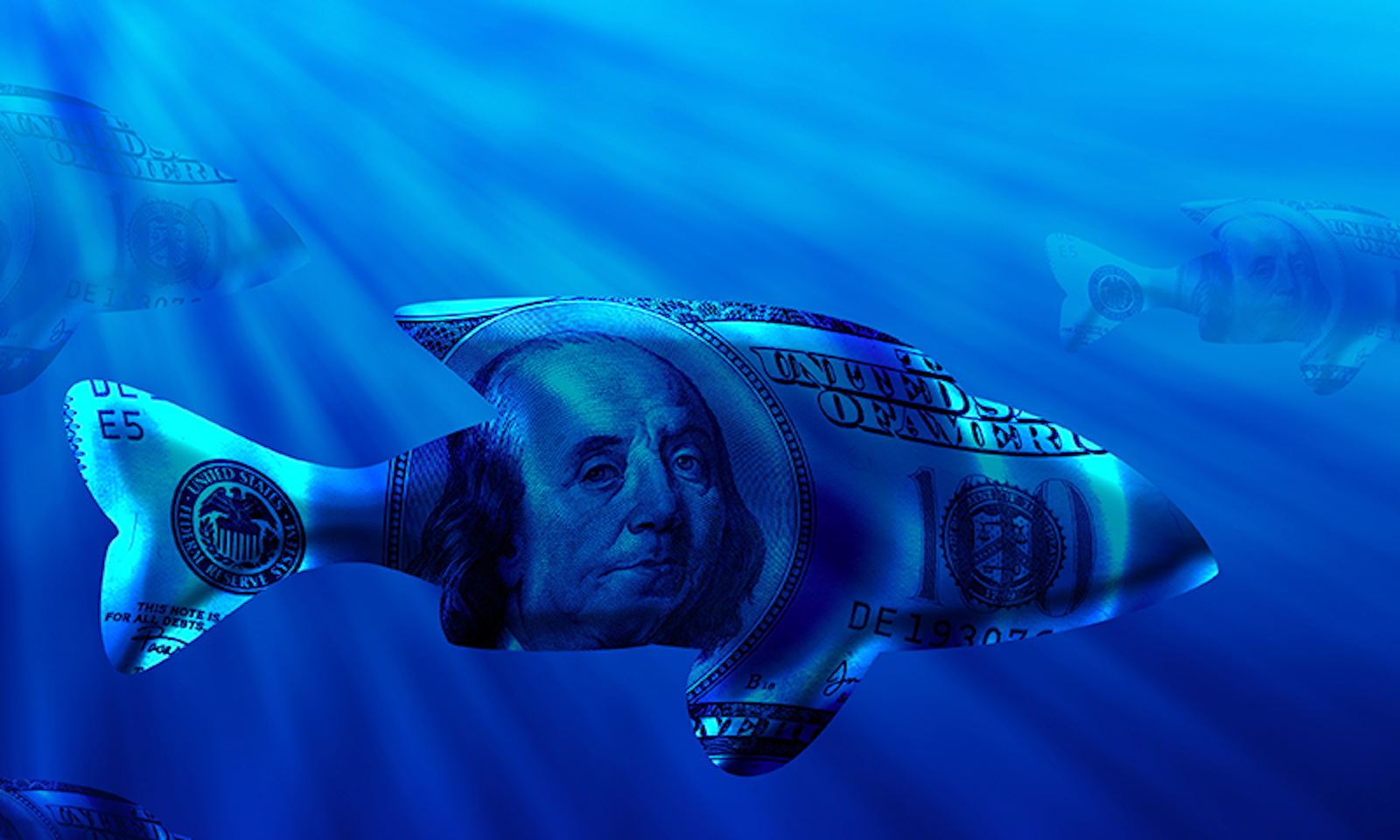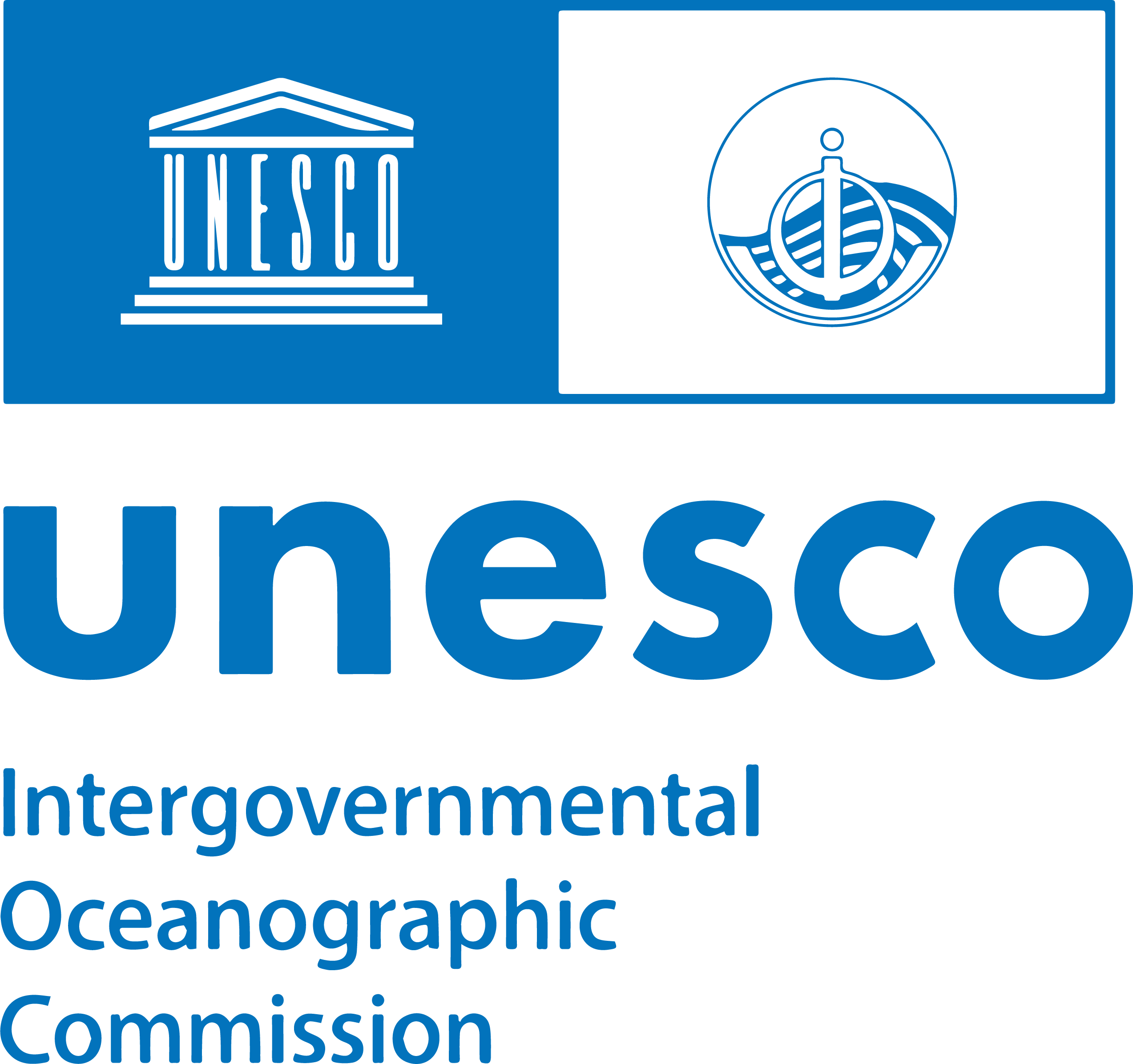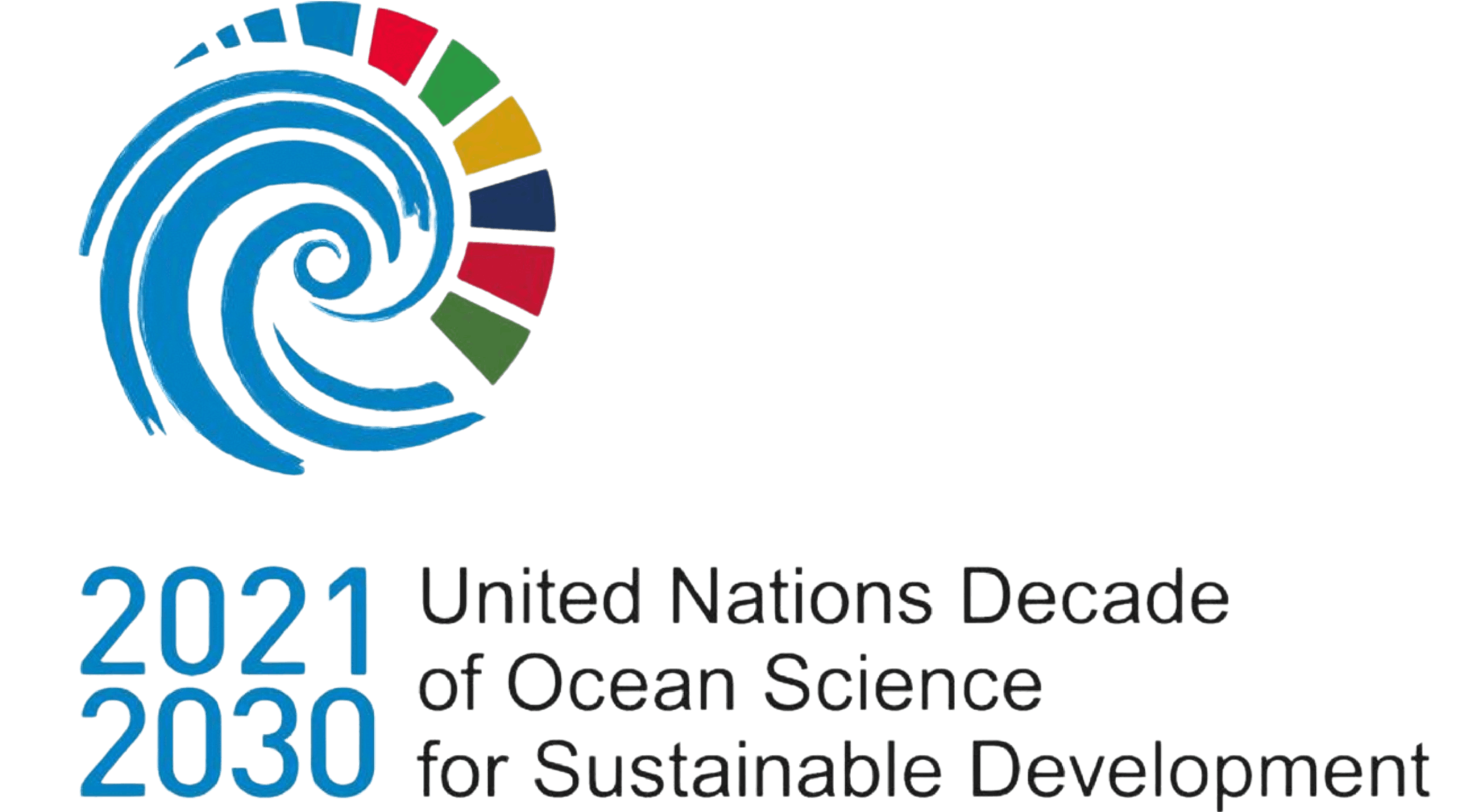A few years ago, Ralph Chami, a financial economist with the International Monetary Fund (IMF), was on a boat in Mexico’s Sea of Cortez with researchers studying blue whales. He knew nothing about the whales—only that seeing them in the wild was on his “bucket list”—but the moment Chami saw his first blue whale surface next to their boat, he felt everything change. The whale was a female, and she was massive, 110 or 120 feet long, with a mouth large enough to fit an elephant. One flick of her fin would have thrown Chami and the researchers into the sea. But she was feeding next to their small boat peacefully. For Chami, the experience epitomized all that he had missed about the wider world from the years spent in conference rooms and behind computer screens and he struggled to contain his emotions.
At night, Chami listened to the researchers talk about the astonishing amount of carbon the world’s great whale populations capture. Why, Chami wondered, was this information not more widely known? The problem, he thought, was that scientists were speaking a language that the people with the money and power to help protect our shrinking whale populations did not understand. That realization set Chami on a new path, helping translate the value of living whales and entire ecosystems into dollars and cents as a way to incentivize their protection. In 2019, he and several colleagues published their findings on the economic value of the world’s great whales in IMF’s flagship magazine, Finance & Development. After accounting for all the services a great whale provides, such as the 33 tons of carbon dioxide its body captures over its lifespan of—on average—60 years, the tourism dollars generated by whale-watching, and the nutrients it disperses that make fish more abundant, the number Chami arrived at was $2 million per whale.
Why consider a whale—and the ocean environment it inhabits—as a service provider? It occurred to Chami that most of the benefits of biodiversity are “silent and invisible” to those making the decisions around the use of natural assets. But, if a living whale offered far greater value than a dead whale, bought and sold for its meat and blubber, Chami saw that it would be possible to value other living things—and even entire ecosystems. In 2019, he co-founded Blue Green Future to advocate for market values to nature’s regenerative services, from whales to seagrass meadows.

Of course, not all aspects of nature’s value can be captured by economic terms. Like life-insurance policies, markets can only account for aspects of nature that can be quantified monetarily. And just as the value of a person’s life amounts to much more than assets owned and income earned, simply pricing the benefits that nature provides fails to capture its less-tangible values—all that is transcendental and spiritual about our living planet.
Recently, I spoke to Chami and Dinah Nieburg, a psychologist, executive coach, and a co-founder of Blue Green Future, about how a “nature-based economy,” can save the world’s oceans, the limits of science-based conservation, and the risks and rewards of using markets to fight climate change and biodiversity loss.
To start, why do you feel it’s important to put a price on living things, be it an ecosystem or an individual animal?
Dinah Nieburg: If we are to survive as a species, we need to change our behavior from an extractive mindset to valuing and creating markets around the services of nature. We’re advocating that you can actually create a market for living ecosystems. It brings together the preservation of nature with income for local and indigenous people who can contribute to both the protection and regeneration of these living systems. Otherwise, we just continue to damage, extract, and kill our living systems.
Ralph Chami: The other way of looking at what we’re doing is we’re valuing a living and thriving nature. There are values for the ocean, but they’re all extractive. Meaning, if you catch and kill a whale for consumption it’s $40,000 to $80,000. So when people say, “oh you’re putting a price on nature,” I say no, you’re putting a price on nature. You’re putting a zero price on nature. I’m trying to tell you it’s not zero.
If you catch and kill a whale for consumption it’s $40,000 to $80,000.
Which brings us to the question, how much are the oceans worth? How would you go about valuing the ocean, especially since much of the ocean’s biodiversity, functioning, and deep-sea structures are yet to be discovered?
Nieburg: As with any of the ecosystem services, we start with the known science and create financial valuations from there. In the case of the open ocean, scientists know overall how much carbon is sequestered by the ocean, and since we have a carbon market for carbon sequestration, we can derive a ballpark figure on the services already provided by the open ocean. Additional “living systems” values of the open ocean will eventually be measured.
So, what is that ballpark figure?
Chami: The value of the ecosystem services of the open ocean is at least in the tens of trillions, if not more. For example, in carbon sequestration alone, starting from 1870 until now, the value of carbon captured at the bottom of the deep ocean is close to $30 trillion. Another example is seagrass. In a report submitted to UNEP/GRID-Arendal, we valued the carbon sequestration of global seagrass to be over $2.3 trillion.
How would these “nature-based” markets work, and how do they differ from existing carbon-reduction or conservation efforts?
Chami: All these living systems—whales, elephants, trees, coastal blue carbon (mangroves, sea grasses, salt marshes, kelp forest), peatlands—can grab carbon from the atmosphere and sequester it in perpetuity. And then there’s the deep ocean, which is a project we’re working on now and can grab more carbon than you can imagine.
The value of that carbon sequestration in, say, a forest, far exceeds chopping it and selling it for timber. It’s the same thing with salt marshes, sea grasses, mangroves, but it’s something no one knew because nobody had ever valued these living systems. We’re used to so much extractive. So, what do we do with that valuation?
This is the part that you’re asking. All these countries and companies have committed to going carbon neutral or negative by 2050 or whatnot creates the demand for carbon offsets.
For example, you could sell the carbon offsets of a mangrove. If you have a community and they have mangroves they’re protecting, they can sell the carbon offsets to companies who want to offset their carbon footprint. The company claims its carbon offset by paying the community money and the money goes to help the local community for looking after its mangroves, providing income and employment. So, it’s not just a carbon game. Really, what you’re investing in is biodiversity.
The value of carbon captured at the bottom of the ocean is close to $30 trillion.
Why not just invest more money in traditional conservation methods?
Chami: Conservation was always a cost proposition. You put your hand out and go begging for people to give money to look after a system. That’s why it was always underfunded and that’s why we could never save the elephants or the whales—or nature, for that matter. What our paradigm does is turn it upside down: Conservation becomes profitable. Conservation was a conversation among activists, scientists, and policy makers. Markets were never in it. We were the bad guys. But guess what, we have $16 trillion available worldwide for funding investments and we can move very fast—faster than any government.
And yet, putting a price on nature and opening it up to market forces carries its own risks. How do you avoid simply privatizing public resources?
Chami: Yes, the risk is out there. If you do privatize natural capital, global inequities would be a hundredfold worse than where we are now, and that worries us. It would be devastating. The so-called “carbon cowboys” go to countries where governance is weak and they buy up nature—land, mangroves, sea grasses. And they sit on the asset and wait for the price of carbon to go up, and then sell it. By buying it, they clear out indigenous and local communities. Those communities and indigenous people should never sell their assets—they should charge rent for looking after their assets.
What still needs to happen for a nature-based economy to work in the real world?
Chami: You need three things: the science, the valuation, and the policy that confers legal ownership to the natural asset. Why do you invest in stocks and bonds? Because these are recognized instruments by the law. How do I put a whale on my balance sheet? Is it valuable? Yes, it was valued at $2 million. Is it recognized by the law? That’s where the policy action is needed. Once you do that, it becomes a financial asset of the countries or communities who own it.
Imagine a ship going through a marine protected area and there’s this gorgeous 110-foot blue whale blocking the ship’s path. The captain is late in delivering his cargo and he thinks to himself, “should I stop? What’s the penalty?” If it’s nothing, he’ll hit the whale. Now imagine if the country where that whale is swimming has imposed a fine of $3 million for hitting the whale because that’s the whale’s value. Then the captain will say, wait a minute, maybe I can switch direction or slow down, which would cost less than hitting the whale and being charged.
But there’s more than that. Because the ship’s insurance company will say, “hey, when we wrote the contract for you, there was no asset in the water worth $3 million that you could damage—meaning we didn’t know the whales existed as an asset. So, you’re on your own. We’re going to terminate the contract or you’re going to install a device on your ship that will keep you away from hitting the whale.” So, once you have a policy action valuing nature, the market reinforces it.
Critics have warned that carbon markets don’t guarantee widespread protection of ecosystems or the systemic change needed to get off fossil fuels. For instance, a mining company that wants to pollute a river can “offset” the damage by paying someone to restore another river. Or, a fossil fuel company can encourage consumers to go “carbon neutral” and buy carbon credits to offset emissions from their flight or gas-powered car. How do you ensure that creating a nature-based economy doesn’t end up perpetuating those business-as-usual interests?
Chami: We wouldn’t be here having this conversation if we were doing a good job of taking care of nature. There are limits to love, and the limits of our love for nature are really, really low.
In your bathroom there’s a tub. Your tub is full. There’s a tap dripping into the tub. Your tub is the atmosphere and it’s full of carbon dioxide. And the tap is the CO2 emissions. So, even if every company stopped burning fossil fuels tomorrow and we all went solar, the tub is still full—and the tub is going to burn us alive. The offsets are designed to drain the tub. Shutting off the tap is something different. The two problems should be separated with different policies designed to address each one.
Nieburg: It’s so clear that we have not reduced our emissions enough. We need all the carbon removal mechanisms possible. Countries and companies need to be held accountable for reducing their emissions, and there needs to be a massive effort toward restoration and regeneration. Unless and until we place a value on keeping the largest ecosystem—open ocean—alive, functioning, full of marine life, we will continue to only look at growing the “blue economy” based on actions that continue to damage, deplete and destroy our life system. ![]()
Lead photo: Carsten Reisinger / Shutterstock


































